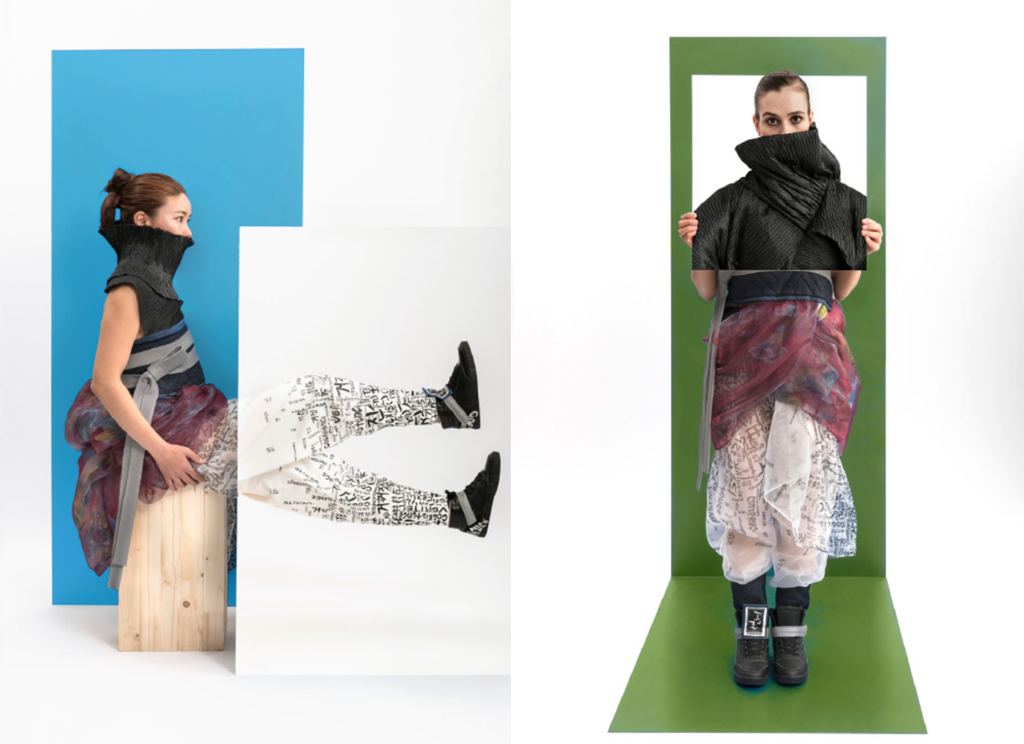Suk-Kyung Lee, First Prize: Bachelor in Fashion Design Competition 2019 – IPAC Geneva
A laureate of the renowned Genevan fashion school, the young designer has drawn on her multicultural experience to craft an inspiring first collection blending tradition and modernity.

A designer without borders
It all began on 18 April 1980 in Busan, Korea. It was here that the young designer Suk-Kyung Lee was born, who from her earliest childhood had a passion for drawing and fashion design despite her conservative environment. She boldly followed this calling, joining Moda Gakuen, a Japanese fashion school based in Tokyo, in 2009.
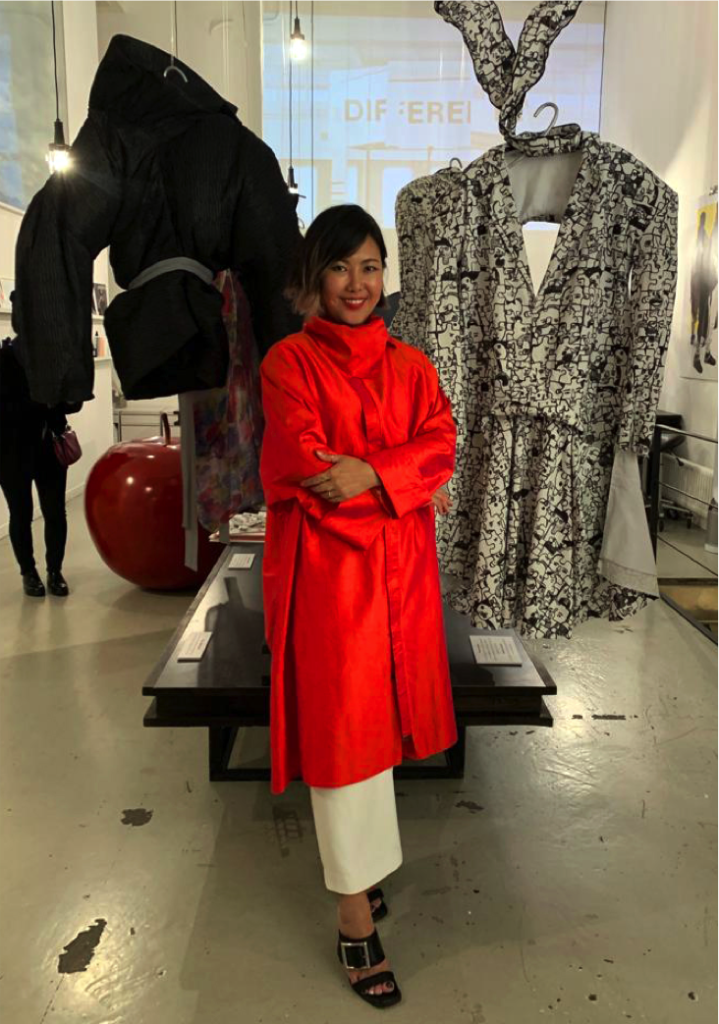
There she brilliantly affirmed her talent, while experiencing the solitary life of an expatriate in a foreign country. This was a trying time of uprooting, which would intensify with her departure for Geneva, where she joined IPAC fashion school. Surrounded by a stimulating teaching team, she determinedly developed a singular artistic vision, blending her discovery of the Western world and incorporating her Confucian-influenced Asian culture.
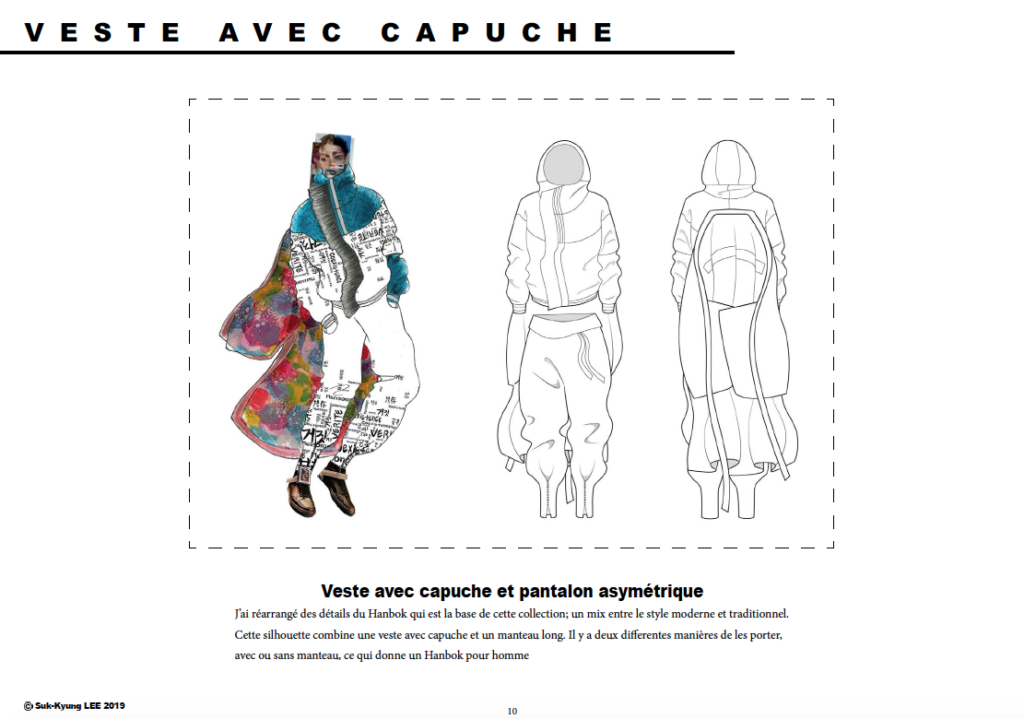
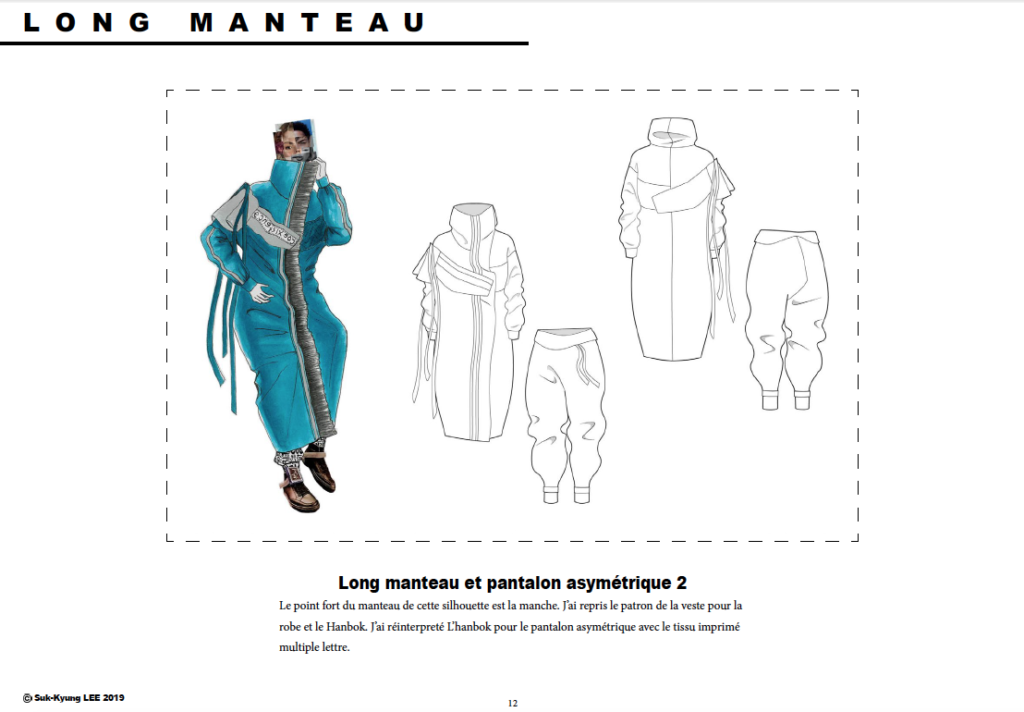
On visiting the Swiss metropolis’ Modern and Contemporary Art Museum (MAMCO), Suk-Kyung Lee started thinking about the status of foreigners and the problems encountered, whether in terms of language or culture, highlighting the existence of different perspectives that can coexist within a community. This was how her first collection “coexistence” came about, winning first prize in the school’s Bachelor in Fashion Design competition.
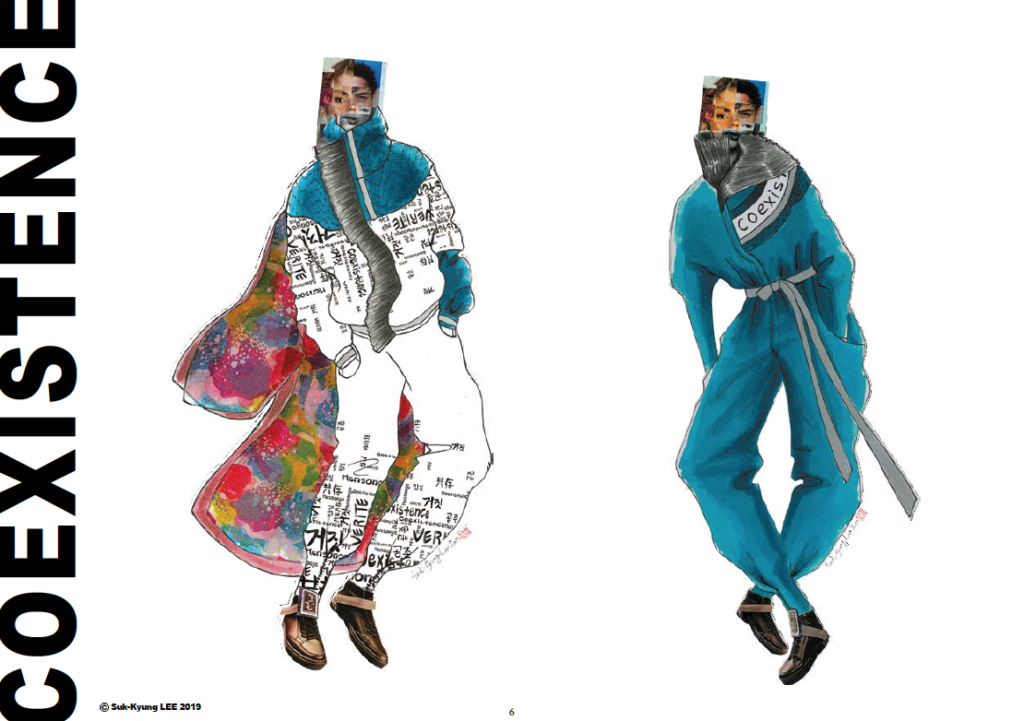
Hanbok(s) and streetwear
On the programme? The Korean designer offers a skilful blend of streetwear elements and fabulously reworked traditional pieces. Inherited from traditional Asian style culture, Hanboks come to the fore as the centrepieces of this dually inspired line.
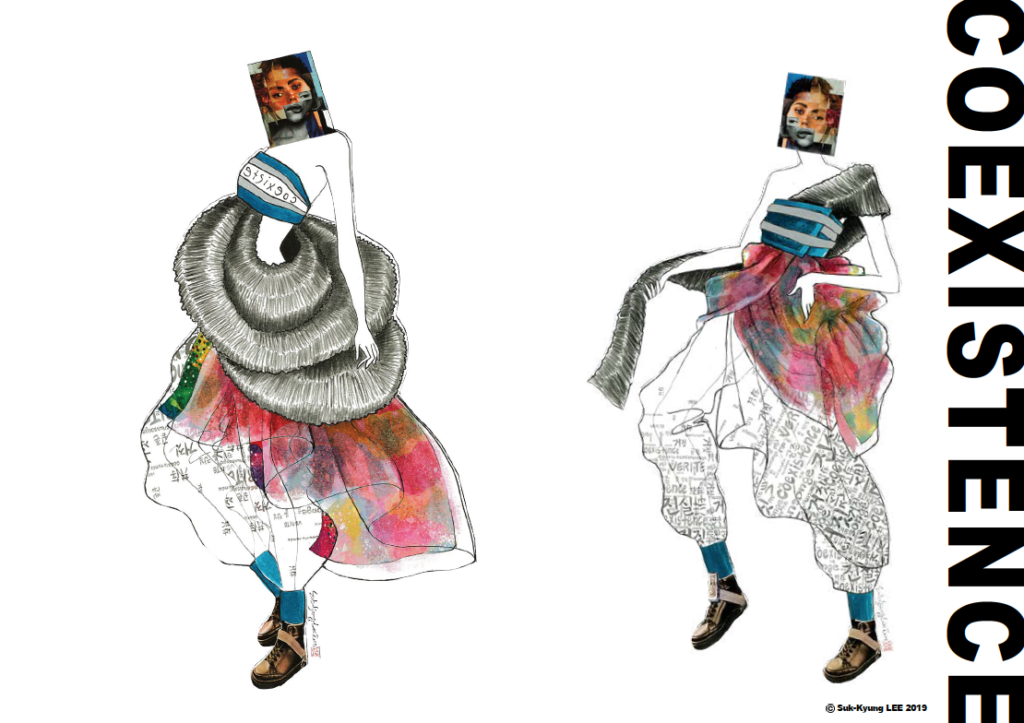
Sometimes pleated, sometimes quilted, these suit jackets with a bold minimalism are teamed with immaculate cotton twill trousers on which the words “Truth” and “Lie” are printed in French and Korean, the highlight of her sartorial thinking.
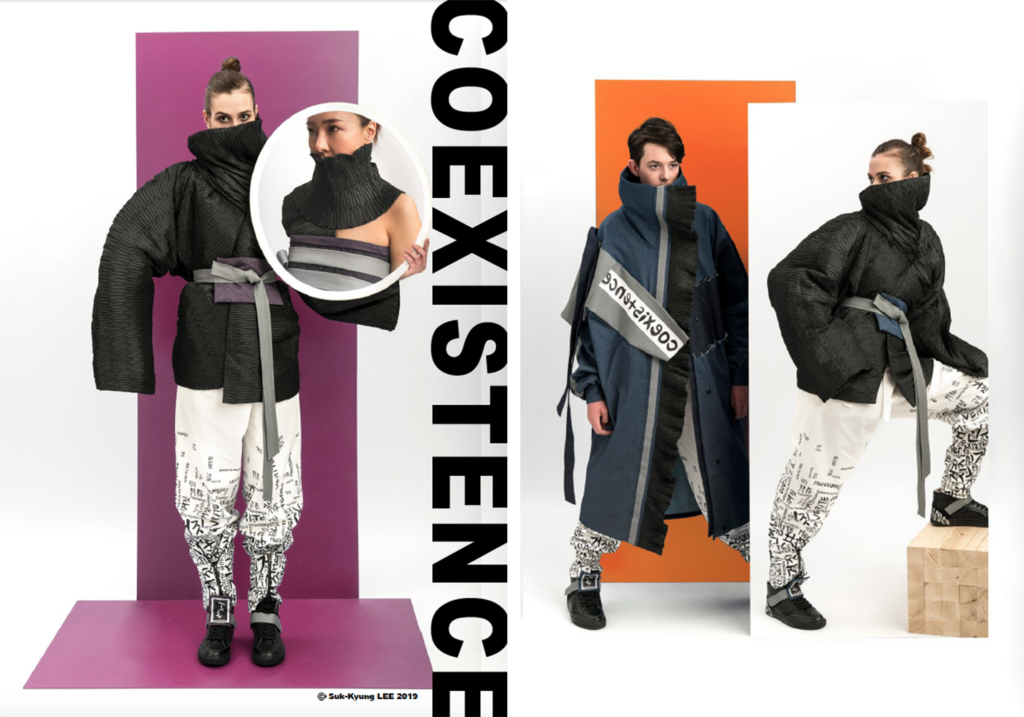
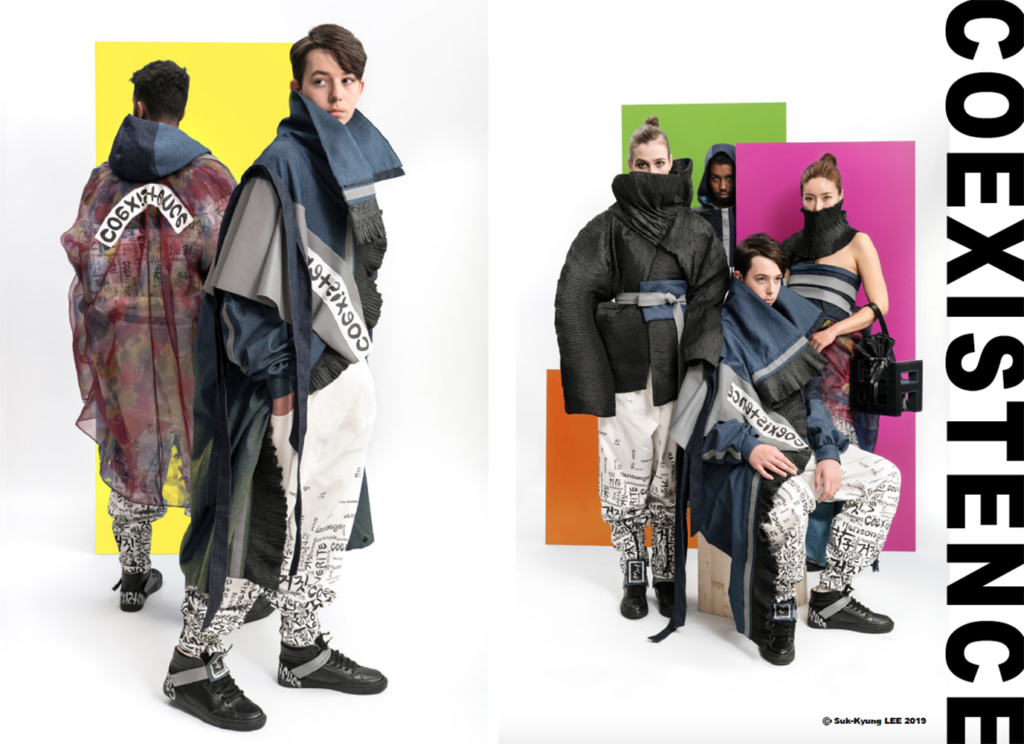
Rolled up over neo-futuristic trainers, they are also worn under evanescent organza dresses with spring-like motifs or long masculine coats with craftsmanship roots. Unmistakably modern, anachronistic looks emerge, presenting a (very) talented dialogue between eras and influences.
